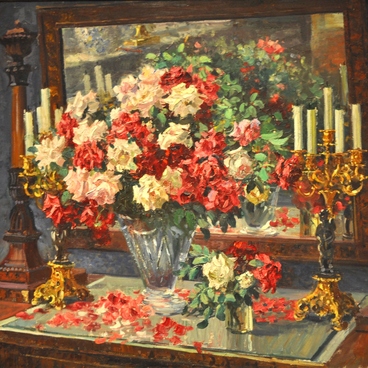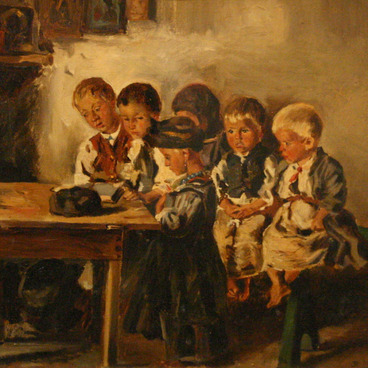The Soviet painter Aleksei Mikhailovich Gritsai (1914–1998) was born in St. Petersburg. In the period from 1930 to 1932, he studied in the studio of the artist Savely Moiseevich Seidenberg. Immediately after that he entered the Leningrad Institute of Painting, Sculpture and Architecture. He was not familiar with artistic subtleties, he drew diligently and naively on the exam — and he was surprised when he was accepted.
At the Institute, Aleksei Mikhailovich studied under Soviet painters Semyon Lvovich Abugov, Vasily Nikolaevich Yakovlev, Isaac Israelevich Brodsky. He graduated from the workshop of the latter in 1939. From the very first days of the Great Patriotic War, Aleksei Mikhailovich Gritsai fought on the front line. Despite the difficult conditions, in short moments of rest he worked on his paintings, often using an ordinary pencil instead of paints.
The artist painted everything he saw. Later, he said that his creative fate was largely determined by the harsh school of front-line life, which strengthened his sense of belonging to his native land, allowed him to find something of his own, personal, in nature, that corresponded to his deepest instincts and character traits.
In 1946, Aleksei Gritsai made his debut at the All-Union Art Exhibition, where he appeared as a landscape lyricist. At the same time, the artist turned to genre painting and portrait, but it was the lyrical landscape that became the pinnacle of his work.
With warmth and love, Aleksei Mikhailovich painted forests and meadows, fields and rivers — everything that is near and dear to every Russian person. He was interested in all the landscape motifs — the high water on the Oka, the blooming willow over a river, the grazing herds on the sun-scorched meadows. The theme of spring passes through all the artist’s work.
The painting “Creek”
from the collection of the Gorlovka Art Museum is distinguished by soft,
delicate colors. In a variety of shades of gray-blue, silver-nacre, Aleksei
Mikhailovich Gritsai conveyed the charm of the spring forest and young birches
— the artist’s favorite motif. The artist said,


